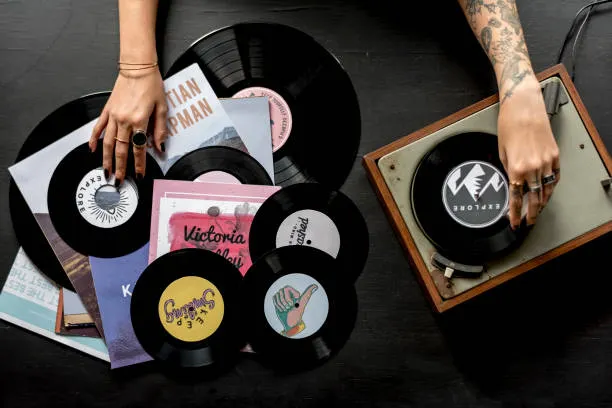The Changing Music Industry
The music industry has undergone a dramatic transformation over the past two decades. With the rise of digital platforms and social media, independent artists now have more power than ever before. They no longer need traditional record labels to distribute their music, gain a fanbase, or even make a living. Meanwhile, the influence of major record labels has been declining as they struggle to adapt to this new landscape.
Key Topics Covered:
- The rise of independent artists
- The decline of major record labels
- The role of social media and streaming platforms
- Financial independence and artistic freedom
- Challenges indie artists face
- The future of the music industry

The Rise of Independent Artists
1. Digital Platforms Empowering Musicians
Independent musicians now have access to platforms like Spotify, Apple Music, YouTube, SoundCloud, and Bandcamp, where they can upload and distribute their music without needing a label. These platforms allow them to:
- Reach a global audience instantly
- Earn revenue through streaming and ad monetization
- Maintain control over their music and brand
2. The Power of Social Media
Social media platforms such as Instagram, TikTok, Twitter, and Facebook have become game-changers for independent artists. They use these tools to:
- Build direct relationships with fans
- Promote their music without expensive marketing campaigns
- Go viral and gain recognition overnight
3. Crowdfunding and Direct Fan Support
Artists are increasingly using crowdfunding platforms like Patreon, Kickstarter, and GoFundMe to finance their projects. This allows them to:
- Receive direct financial support from fans
- Avoid exploitative record label contracts
- Maintain creative freedom
The Decline of Traditional Record Labels
1. Outdated Business Models
Record labels once controlled the entire music industry, but their outdated business models have made them less relevant. Reasons for their decline include:
- Dependence on physical album sales (which have plummeted)
- Exploitative contracts that favor labels over artists
- The slow adaptation to digital and streaming models

2. Streaming Services Changing Revenue Structures
Streaming services have significantly altered how musicians earn money. While labels once made large profits from album sales, streaming has:
- Reduced album sales and increased per-stream payouts
- Given artists the ability to release music independently
- Weakened labels’ control over distribution
3. The Rise of DIY (Do It Yourself) Culture
With resources like YouTube tutorials, affordable music production software, and direct-to-fan marketing, independent artists are now capable of:
- Producing high-quality music from home
- Handling their own promotions
- Releasing songs without a middleman
Financial Independence and Artistic Freedom
1. No More Exploitative Contracts
Major labels often sign artists into unfair contracts that:
- Take a large percentage of their earnings
- Control their music rights
- Restrict creative freedom
Independent artists can now retain ownership of their music, ensuring they earn a fair share of their revenue.
2. Higher Profit Margins
Artists who distribute music independently can:
- Keep a larger percentage of streaming and sales revenue
- Set their own pricing for music and merchandise
- Avoid unnecessary expenses tied to record label management
3. Creative Control
Without interference from record labels, artists have full control over:
- Their music’s style and sound
- Their release schedules
- Their branding and marketing strategies

Challenges Indie Artists Face
Despite the benefits, independent artists still face obstacles, including:
1. Marketing and Promotion Struggles
Without a label’s marketing budget, independent artists must:
- Invest time and money in self-promotion
- Learn social media strategies and digital marketing
- Compete with mainstream artists for visibility
2. Financial Challenges
While independent artists keep more of their revenue, they must also:
- Fund their own music production
- Pay for equipment, studio time, and promotions
- Balance financial stability with creative work
3. Industry Gatekeeping
Even with digital platforms, mainstream success often still requires:
- Industry connections
- Playlist placements on Spotify and Apple Music
- Press coverage from major music outlets
The Future of the Music Industry
1. Growth of Independent Success Stories
Artists like Chance the Rapper, Russ, and Tobe Nwigwe have proven that independent success is possible. Their rise has shown that:
- Major labels are not necessary for a thriving music career
- Direct-to-fan engagement is key to longevity
- Financial independence leads to long-term creative freedom
2. Evolution of Record Labels
While traditional labels are declining, some are adapting by:
- Offering more artist-friendly deals
- Providing distribution-only services instead of full control
- Partnering with independent artists rather than owning them
3. Technology and AI in Music
The future of independent music may include:
- AI-powered music production tools
- More personalized streaming recommendations for indie artists
- Blockchain-based platforms that allow artists to sell music directly to fans
Conclusion: A New Era for Music
The rise of independent artists marks a significant shift in the music industry. With digital platforms, social media, and direct fan support, musicians no longer need traditional record labels to succeed. While challenges still exist, the future looks promising for those who embrace the power of independence.
Artists now have the freedom to create, distribute, and profit from their music on their own terms, making this one of the most exciting times in the history of the music industry.
Keywords:
Independent artists, music industry, record labels, streaming platforms, social media, digital distribution, artist freedom, Spotify, YouTube, crowdfunding, self-promotion, music business, indie music scene, financial independence, music marketin
The Rise of AI in Mental Health Therapy: A Game-Changer or a Risk?






